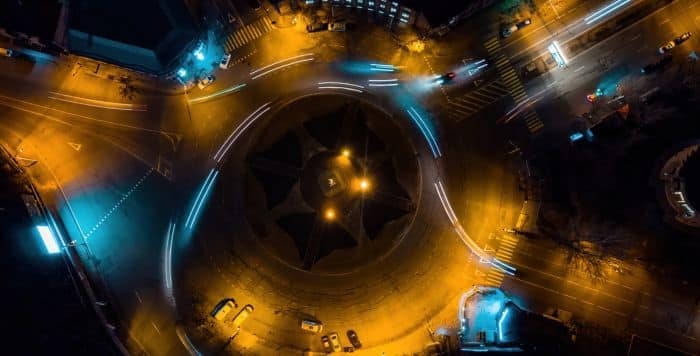Flying drones at night can be a great experience that is very different from daytime operations for obvious and less obvious reasons. It’s a combination of adrenaline, innovation, and the opportunity to capture captivating images, making it a popular endeavor for drone enthusiasts. But the question arises – Can I fly my drone at night? The answer is simple, but it is a multi-layered blend of regulatory guidelines, safety measures and technical know-how. This article is a comprehensive guide to understanding the intricacies of nighttime drone operations. Learn more about the legality of flying a drone at night, the accessories you need, and tips for safe night drone flying.
Reasons for flying drones at night
There are many reasons why individuals or businesses choose to fly drones at night.
Unique photo opportunities: Nighttime offers a unique opportunity for aerial photography and videography. The effect of artificial light on darkness results in amazingly high-contrast images. Landscapes, cityscapes, and even events look different in the dark, offering photographers and filmmakers a new perspective.
Reduced air traffic: The skies tend to be less crowded at night, making it easier for drone pilots to fly their drones without worrying about colliding with other drones.
Evening event: Drones can be used to capture footage of nighttime events such as fireworks displays, concerts, and festivals. Aerial photography provided by drones provides a unique view of these events.
Search and rescue operations: drone on board thermal imaging camera It is very useful for search and rescue operations conducted at night. It can quickly cover large areas and locate missing persons based on heat signatures.
Surveillance and security: in the area of security and surveillance, Drones can be used to monitor property at night, track wildlife, and patrol areas that are difficult for humans to reach.
Commercial application: In some industries, real estate and construction Photographing our property at night is useful as it provides a different and more dramatic view.
Can I fly my drone at night? Regulatory status
The short answer is yes. Most people are allowed to operate drones at night, whether for recreational or commercial purposes. However, there are considerations and guidelines that must be followed.
recreational
The Federal Aviation Administration (FAA) is responsible for regulating drone operations in the United States. These regulations apply to both day and night drone operations.
The good news for recreational drone operators is that they are now allowed to fly drones at night. There is no specific night work certification or training program that must be completed. The set of rules that apply during the day also apply to nighttime operations.
However, for safety reasons, drones are required to be equipped with anti-collision lights that are visible from the legal mile of 3 miles away. This makes the drone easier to spot and minimizes the risk of accidents.
For drone operation beginners, for successful applicants Recreational UAS Safety Test (TRUST) is a prerequisite. His TRUST test, which began in 2022, was designed to help new drone operators understand the regulations and rules associated with flying drones.
This exam is available online and is administered by a third party approved by the FAA. This is free and is an important step in ensuring that drones can operate safely and in compliance with FAA guidelines.
Recreational drone pilots are also encouraged to follow FAA-approved Community Based Organization (CBO) safety guidelines. CBO guidelines often parallel FAA regulations to ensure drones fly responsibly.There are currently four authorized CBOs, the most popular being Model Aviation Academy.
for commercial use
For professional drone pilots, the regulations for night flights are more stringent as they may require more complex maneuvers. The pilot must hold his FAA-issued remote his pilot certificate and must strictly adhere to all operating rules specified in Part 107. This includes drone speed, altitude and operating location restrictions.
Professional drone pilots who need to fly beyond the limits of Part 107 regulations, such as operating beyond visual line of sight, should apply for an exemption from the FAA. This waiver application includes a detailed safety case, which the FAA will review thoroughly. If the FAA determines that the proposed operation can be safely conducted, it may grant a waiver.
Related: Best Part 107 Study Guide
9 tips for flying your drone at night
1. Use good lighting. Equip your drone with anti-collision lights that are clearly visible from at least three legal miles away. This is a mandatory requirement by the FAA and helps others identify your drone in the dark.
